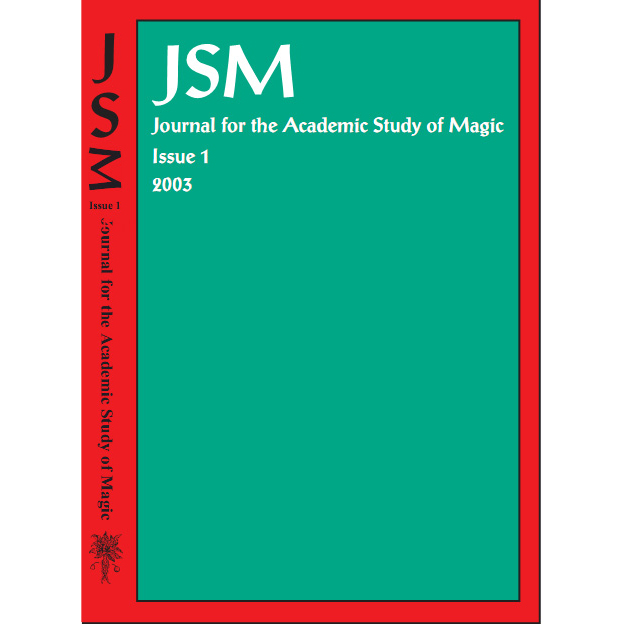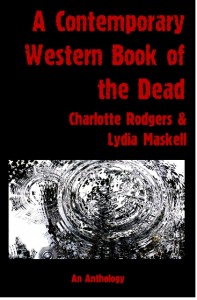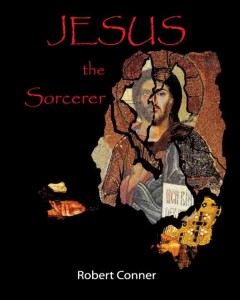
A wide and deep view of magic – rating 9.’ Fortean Times 176
‘A must-read for all those interested in an academic approach to the magical arts.’ The Cauldron
JSM1
ISBN 978-1869928-674
Format: Softcover/200 pages.
ISSN 1479-0750
£20/US$40
Click HERE for JSM1 / UK
Click HERE for JSM1 / USA
The first volume of JSM offers a rich dive into the study of magic and esotericism. Alison Butler’s analysis of Barrett’s Magus highlights its significance in Western occultism, while John C. Day’s exploration of the Cult of Dagon sheds light on this ancient deity. Joyce Goggin traces the history of tarot and playing cards, and Dave Green examines magical identity in times of social uncertainty. Matt Lee’s discussion on anomalous sorceries, Ilaria Serra’s look at Streghe in queer writings, and Deana Weibel’s insights on magical thinking in pilgrimage round out this diverse and engaging collection.
JSM2
ISBN 978-1869928-725
Format:Softcover/410 pp.
ISSN 1479-0750
UK £20/US$40
Click HERE for JSM2 / UK
Click HERE for JSM2 / USA
JSM 2 offers a diverse and thought-provoking collection of essays that explore various aspects of magic and the supernatural across different cultures and historical periods. Woodman’s piece on *Lovecraftian Magick* delves into the intersection of modernity and the demonic, while Green’s psychoanalytic approach to Pagan magic offers fresh insights into the psychology behind magical practices. Chambers’ examination of supernatural reliance during World War I adds a historical dimension, revealing how soldiers turned to the mystical in times of extreme crisis.
Morgan Luck’s exploration of the metaphysical ties between magic and miracles challenges the boundaries of these concepts, while Semmens’ study of demonic possession and spiritual healing in 19th-century Devon provides a captivating look at rural beliefs. Filipovic and Rader’s analysis of the human body in Southern Slavic sorcery highlights the cultural significance of folk practices, and Snell’s mysterious “Four Glasses Of Water” adds an intriguing layer of symbolic interpretation.
Hale’s exploration of the Cornish landscape, Evans’ study on Kenneth Grant’s influence on the magickal revival, and Cheak’s linguistic analysis of magical terminology across cultures further enrich the volume, offering readers a well-rounded exploration of the magical and mystical. McCannon’s examination of the symbolism of the pierced heart in Roerich’s work ties the collection together with a focus on the profound power of symbols.
Overall, JSM 2 is a captivating read that will appeal to scholars and enthusiasts alike, providing a deep dive into the world of magic and its enduring influence.
Review: The Pentacle 13
‘Don’t be put off by the academic titles these articles are well worth reading whatever your path and I can’t wait for Issue 3. – rated 5 Pentacles’
JSM3
ISBN 978-1869928-964
Format: Softcover/300 pp.
£20/US$40
Click HERE for JSM3 / UK
Click HERE for JSM3 / USA
JSM 3 presents an engaging collection of essays that explore the intersections of magic, identity, and culture. Amy Lee’s piece on witchcraft as a new language of female identity offers a fresh perspective on the empowerment found in modern witchery. Dave Green’s examination of Bergson’s influence on modern magic highlights the creative potential of philosophical ideas in shaping magical practices.
Hannah Sanders’ analysis of teenage witchcraft through the lens of *Buffy the Vampire Slayer* explores how language and resistance shape contemporary magical identities among youth. Mary Hayes delves into historical superstitions with her study on *The Witch of Edmonton*, revealing the blend of magical practices and medical beliefs in early modern times.
Penny Lowery’s exploration of magical elements in healing practices adds a fascinating layer to the re-enchantment of medicine, while Jonathan Marshall’s study on virtuality in early modern Britain provides a captivating look at the era’s beliefs in ghosts, fairies, and other supernatural phenomena. Kate Laity’s piece on sacred drama ties the collection together with a look at how ancient mysteries continue to live on in modern performances.
The research articles further enrich the volume, with David Geall’s exploration of esoteric symbolism in H.P. Lovecraft’s *The Dream-Quest of Unknown Kadath* offering a deep dive into the hidden meanings within Lovecraft’s work. Susan Gorman’s examination of magical transformation in Jean-Pierre Bekolo’s *Quartier Mozart* through Deleuzian and Guattarian theories of becoming provides a thought-provoking conclusion to the collection.
Overall, JSM 3 is a compelling and diverse exploration of magic and its cultural resonances, making it a must-read for those interested in the evolving role of the mystical in both history and contemporary life.
JSM4
ISBN 978-1869928-391
Format: Softcover/400 pp.
£20/US$40
Click HERE for JSM4 / UK
Click HERE for JSM4 / USA
JSM 4 offers an intriguing array of essays that delve into the diverse world of magic, from ancient beliefs to modern interpretations. Laubach, Martinie’, and Clemons explore the dynamics of self-initiation in the American Neopagan community, providing valuable insights into contemporary spiritual practices. DeMente’s discussion on the Trinity of the Hebrew Goddess uncovers submerged beliefs, offering a guided presentation of goddess narratives that bridge ancient and modern perspectives.
Stannish’s exploration of the topography of magic in both modern Western and ancient Egyptian minds reveals fascinating parallels in how different cultures conceptualize magic. Luke’s parapsychological model examines psychic abilities within the context of magical will, blending science and esotericism in an innovative way. Ash’s essay on the possibility of magic within a quantum mechanical framework further challenges the boundaries between science and mysticism.
Lord’s comparison of magic, medicine, and technology in Neuromancer and Brain Plague highlights the evolving relationship between the mystical and the technological. Lauren Berman’s analysis of Rowling’s depiction of the devil explores whether it reflects ancient archetypes or modern interpretations, adding depth to the study of contemporary literature.
Sederholm’s examination of Cotton Mather and W.B.O. Peabody’s struggle against magic offers a historical perspective on the clash between enchantment and rationality. Geall’s comparison between Lovecraftian Mythos and African-Atlantic mystery religions provides a unique cultural juxtaposition, while Marsh’s discussion of *The Lion King* through the lens of the collective unconscious ties popular culture to deeper mythic structures.
Moynihan’s study of mythic operative magic in the Merseburger Zaubersprüche and Bernhardt-House’s exploration of the Old Irish impotence spell reveals the intricate connections between language, myth, and magic in ancient texts. Finally, Karimova’s examination of Turkish coffee cup reading in North Cyprus offers a fascinating look at the persistence of folk magic in modern times.
Overall, JSM 4 is a diverse and thought-provoking collection that appeals to both scholars and enthusiasts, offering new perspectives on the enduring power of magic across cultures and eras.



